Voluntary Benefits Voice





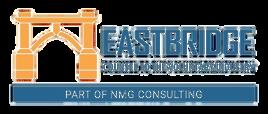

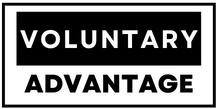

Jennifer Daniel Aflac

Jack Holder EBIS

Paul Hummel

Rachel McCarter Mercer


Editors
Heather Garbers | Trevor Garbers
For Media and Marketing Requests Contact:
Heather@voluntary-advantage com
Trevor@voluntary-advantage com
Mailing Address
10940 S Parker Rd #257 Parker, Colorado 80134

Steve Clabaugh CLU, ChFC
Mark Rosenthal PwC

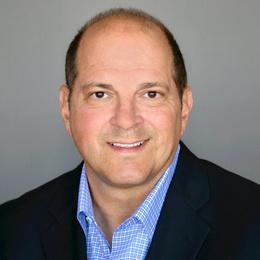
Seif Saghri Founder
Tim Schnoor Birch Benefits
Sydney Consulting Group A d v i s o r y B o a r d


Hunter Sexton, JD, MHA

From Paycheck Pressure to Financial Empowerment: How Employers Can Lead the Charge on Financial Wellness
Why Navigating Uncertainty Requires Workforce
Financial Resilience: As Consumer Confidence Dips to a Low, Financial Wellness Offers a Way Through
Thoughts From the Advisory Board
Why You Need “Exercise Red Flag”

As Well as Can be Expected: Voluntary Carriers are Well on the Way to Making Wellness Benefits Table-Stakes

From Crisis to Prevention: Why Employers Must Offer Proactive Mental Health Solutions
Greetings from all of us here at Voluntary Advantage It's hard to believe we've just concluded our third annual Voluntary Advantage Conference A heartfelt thank you to our sponsors, speakers, and attendees your support made the event a tremendous success
In this month’s publication, our theme is employee wellbeing. Yes, employee wellbeing is an incredibly broad term. With regards to this Editor’s Note, I’m going to keep it very simple – it’s about taking care of the policyholder By now, if you’ve followed our publication each month, we hope that you’ve seen our continued messaging around moving all the things we do from creating a product, marketing a product, administering a product, etc, to hopefully re-shifting our marketplace focus on the exact needs of the individual who’s trusting their premium dollars to deliver on this promise at the time they need us most – and that’s at claim time.
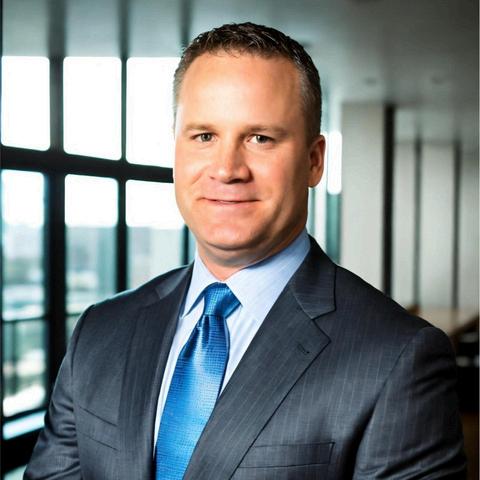
I recently spent time at an industry conference where I had breakfast with a carrier partner who is laser focused on bringing in the right people, a choregraphed administration and claims process where they place the policyholder first in everything they do today. I left that breakfast energized and excited to continue our partnership, as you could absolutely hear the excitement in each team members’ voice as they shared a common mission in elevating our marketplace to a new level
However, this excitement was darkened on the same day, in meeting with a technology partner who shared what they believe is the new way to win business in “shaking down” carrier partners in getting them to redevelop and re-file products that have less benefit and are easier to build onto their platform - as per their quote “it’s really not about the product, it’s really about eliminating the hassle for the employer The lesser the product bells and whistles the better”, and “If we do it correctly, we’ll generate more compensation for the brokerage firm, as we’ll keep the same pricing with less benefits and the carrier will be able to generate more marketing and tech dollars for us all the share!”
Now, I really wish I was kidding but I’m not, and this is still the mindset by some in our marketplace today. If you know me, I can promise you I didn’t finish my meal as I professionally explained my position of placing the policyholder first, eliminating subsidies in the future and surely not allowing technology firms to build out product that only fits their given set of needs Now, my clarity of communication at this dinner nor, this editor’s note will revolutionize our market It takes an army of professionals who share a common mission of doing things the right way If we all continue to place the policyholder first, our mission here at Voluntary Advantage and our entire marketplace, will be something we can all be very proud to be apart of long after we exit and hand it to the next generation of bright minds who are excited to continue its growth and incredible impact we have on our policyholders and their loved ones for generations to come.

By Eastbridge Consulting Group
Workplace wellness may seem like a fairly recent buzzword, but the idea actually has been buzzing around corporate America for more than a century National Cash Register employees met for pre-work horseback rides in the 1880s and enjoyed twice-daily exercise breaks, according to Corporate Wellness Magazine Hershey Foods built a recreation complex for employees in the 1930s, and business leaders in the wake of World War II saw the value of their employees staying fit, at least at the executive level It only makes sense that healthy workers are more productive, and some research shows they also may be more likely to stay in their jobs, as the focus on employee wellbeing makes them feel valued and leads to higher morale.
Workplace wellness has expanded far beyond those early beginnings to become an essential part of employee benefit programs In fact, virtually all carriers surveyed for Eastbridge’s recent “Voluntary Wellness Benefits” Frontline™ Report offer a wellness benefit with at least one voluntary product
Nearly all offer a wellness benefit with their accident product, 88% include it with their critical illness product and 83% provide it with hospital indemnity/supplemental medical coverage Some carriers (40%) also offer a wellness benefit with cancer coverage Carriers typically offer wellness benefits as optional coverage rather than building them into their plans.
These benefits include family members, too: Nearly all carriers we surveyed offer wellness benefits for spouses and dependents, and most plans allow everyone covered to collect wellness benefits on each product they’re enrolled in, usually without imposing family maximum limits other than the maximum number of benefits for each insured
That’s not to say all wellness benefits are created equal The number of tests and screenings carriers’ plans cover varies widely from 9 to 68, averaging 37 Some of the most common are blood tests for cholesterol and triglycerides, mammograms, chest x-rays, colonoscopies, Pap smears, prostate cancer screenings and stress tests, and some plans also cover dental and vision exams, immunizations, smoking cessation and weight control programs, skin cancer screenings and other preventive tests.
And the list is growing. About a third of carriers surveyed have added more wellness tests in the last two or three years, including annual physical exams, COVID-19 screenings, genetic testing, mental health screenings and well-child exams
Clearly, carriers see the value in catching problems earlier while they’re easier to treat, are more likely to have positive outcomes and yes, claims are less costly
If there’s one aspect of wellness benefits that carriers seem less than pleased with, it’s utilization Many carriers don’t track the number of insureds with wellness benefits who file claims, and the numbers vary widely from just 2% to 66% for those that do, but on average only about 20% of employees and family members with wellness benefits actually use them Most carriers say utilization doesn’t vary by product, but those who do cite differences say utilization is highest for wellness benefits on critical illness or accident products.
Low utilization could be tied to low awareness. Several carriers remind employees about their wellness benefits primarily during the enrollment process, but about half of carriers continue to promote wellness benefits after the enrollment. Others offer customizable communication campaigns to all customers or on a case-by-case basis
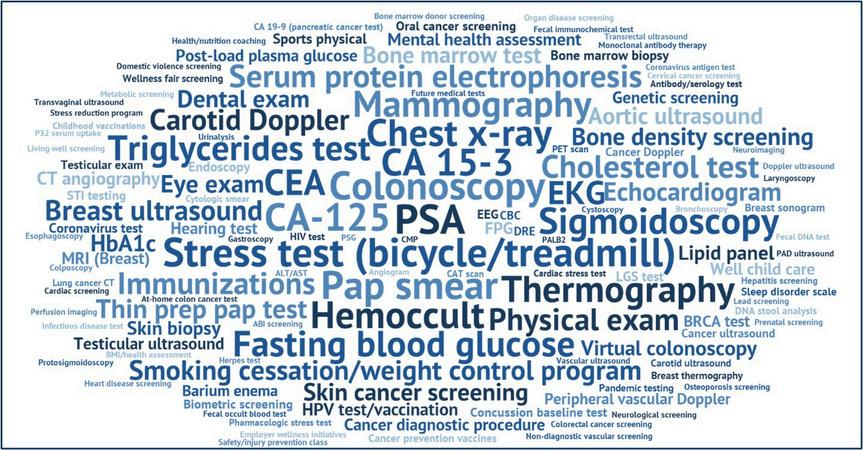
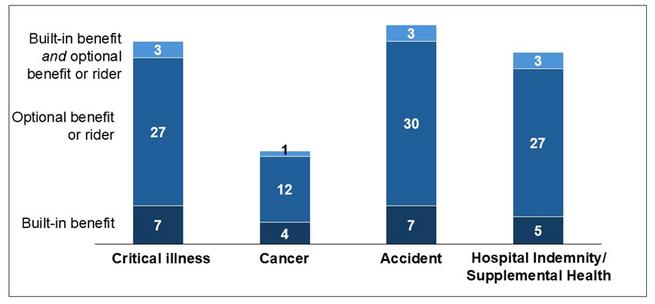
Communication tools can include digital postcard campaigns, quarterly wellness reminders, text reminders, account management staff reminders during service calls, mailings, and dedicated marketing fliers
Low utilization is just one challenge carriers say they face with wellness benefits, alongside regulatory inconsistencies and claims handling They also list increased regulatory scrutiny of wellness benefits on voluntary products, market expectations to continue expanding coverage, and claims automation as other concerns they expect to face in the next two years

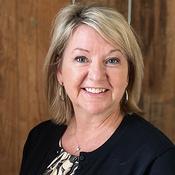
Nick Rockwell President Danielle Lehman Senior Consultant
Not on the list: higher loss ratios. Despite carriers’ efforts to remind employees of their valuable wellness benefits, the majority of carriers providing information about loss ratios say they’re as expected, and about another 40% say they’re lower than expected. No carriers report loss ratios are higher than expected.
With apparently little financial downside to offering wellness benefits with voluntary products, it won’t be surprising if carriers continue to build on the century-old trend of helping employers focus on employee wellbeing And for employees taking advantage of these coverages, that’s a healthy dose of good news
Eastbridge is the source for research, experience, and advice for companies competing in the voluntary space and for those wishing to enter For over 25 years, they have built the industry’s leading data warehouse and industry-specific consulting practice Today, 20 of the 25 largest voluntary/worksite carriers are both consulting and research clients of Eastbridge
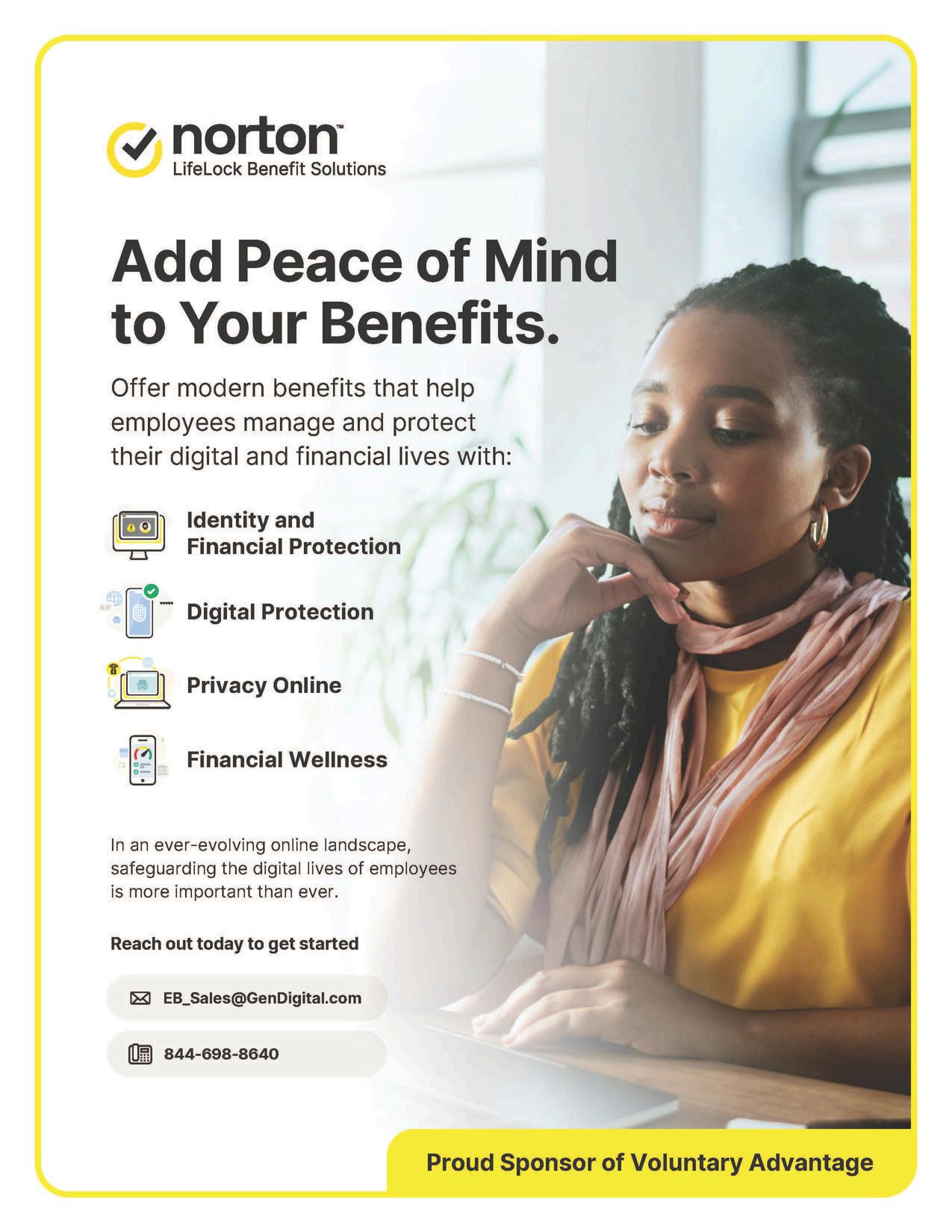

By PES Benefits
Traditionally, mental health benefits have focused on addressing issues after they arise However, a proactive approach to mental health can prevent problems before they escalate, leading to a more resilient workforce. As an employee benefits broker, advocating for preventive mental health strategies positions you as a forward-thinking partner to your clients.
The COVID-19 pandemic highlighted the importance of mental health, prompting a reevaluation of reactive approaches A 2024 article in the Monitor on Psychology noted that the pandemic exacerbated behavioral health needs, underscoring the necessity for preventive measures (apaorg)
Effective preventive mental health strategies include:
Stress Management Workshops: Teaching employees coping mechanisms to handle daily stressors
Mindfulness and Resilience Training: Equipping staff with tools to build mental fortitude.
Regular Mental Health Screenings: Identifying potential issues early to provide timely support.
Financial Wellness Programs: Addressing financial stress one of the leading causes of anxiety among employees.
Peer Support Networks: Encouraging open conversations about mental health in a safe, supportive environment
Virtual mental health platforms are integral to preventive care:
Accessibility: Employees can access resources anytime, making it easier to integrate preventive practices into their routines
Variety of Tools: From meditation guides to interactive modules, virtual platforms offer diverse resources to cater to different needs
On-Demand Counseling: Short-term and immediate support options help employees address stressors before they become larger issues
A KFF Health Tracking Poll from 2024 found that 43% of US adults have delayed or gone without mental health care due to cost concerns. (kff.org) Virtual mental health programs help bridge this gap by providing more affordable and accessible support.
To promote preventive mental health care:
Educate Clients: Highlight the benefits of shifting from reactive to proactive mental health strategies
Suggest Virtual Platforms: Recommend digital solutions that offer mental wellness tools, coaching, and early intervention resources
Encourage Year-Round Communication: Help clients develop ongoing messaging campaigns to promote mental health benefits before crises occur
Support Utilization Strategies: Work with HR teams to ensure employees are aware of and engaged with their mental health benefits
Employers who prioritize proactive mental health solutions foster a healthier, more engaged workforce while reducing the costs associated with absenteeism, turnover, and lost productivity. As a benefits broker, you can be the catalyst for this shift helping your clients move beyond crisis management to true mental wellness support

PES Benefits is dedicated to revolutionizing the employee benefits landscape with cutting-edge technology, administration, education, and virtual care solutions. Since its inception, PES Benefits has focused on simplifying the benefits experience, making it more accessible and meaningful for all involved
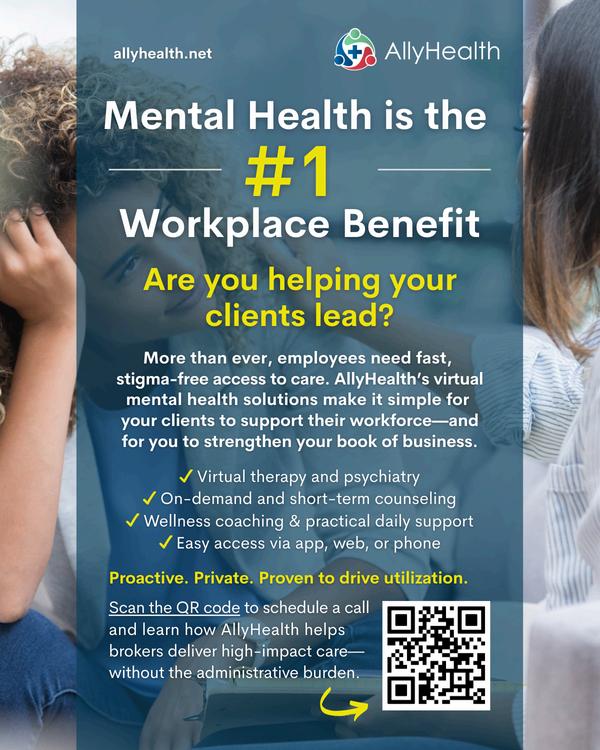

By Heather & Trevor Garbers
In today’s economic climate, financial stress has become an all-too-common part of daily life From rising living costs and record levels of personal debt to economic uncertainty and stagnant wages, many individuals are struggling to manage their financial health. Most recently the Federal Government announced that it will resume collections on defaulted federal student loan debt on May 5 – impacting an estimated 5 million borrowers who have not made a payment in 360+ days, and an additional 4 million who are in late-stage delinquency and have not made a payment in 91-180 days th
This strain doesn’t just impact personal wellbeing it carries over into the workplace, affecting productivity, engagement, and overall morale As a result, financial wellness is no longer a personal issue alone; it's an organizational priority
Employers who recognize this shift and invest in comprehensive financial wellness resources are not only supporting their employees' well-being they’re also strengthening their workforce and driving long-term business success.
But are employers actually seeing the strain and what can they do to help their employees with solutions that actually show results? We have interviewed Meghan Pistritto - Vice President, Product Lead for Disability, State Paid Leaves and Holistic Well-Being with Prudential Financial; Russ Norris - Head of Worksite Distribution Strategy with MassMutual; and Brian Harrison - President, Head of Consumer Product at SAVVI Financial, to learn more about what they are seeing in the marketplace today
What is the overall state of employee financial wellness today?
Russ: Employee financial wellness is under real strain. As of March 2025, our Workforce Financial Stability Score fell to 54.4, reflecting a sharp drop in sentiment compared to earlier in the year. Employers are looking for benefit solutions that enhance employee financial wellness in both the near term and the long term
Brian: A recent Credit Karma study found that 70% of Americans have financial regrets from 2024, with not saving enough topping the list According to SAVVI’s upcoming “Blindfolded Benefits” study*: nearly 1 in 5 employees (19%) say their benefits have created financial stress, and 29% have dipped into savings to cover health costs in the past year, while 16% have gone into debt It’s not just about wanting bigger paychecks many employees simply haven’t had the support or resources to budget properly, build emergency savings, or pay down debt. A full 44% lack confidence in their ability to recreate their paycheck in retirement, and 33% don’t even know if they are on the right track. Additionally, with nearly a quarter of households still living paycheck to paycheck and inflation adding extra pressure, it’s no surprise that financial stress is weighing heavily on workers The need for better tools, education, and real support around financial wellness has never been more urgent And the workplace may be the only place they can receive the financial guidance they need
How big of an issue is financial stress on employees in the workforce? Are there certain demographics or industries that are seeing higher than normal stress?
Meghan: According to Prudential’s recently released Benefits & Beyond study, employers and employees agree financial stress is the No. 1 employee concern – but employers can underestimate how much employees struggle with handling everyday expenses and living paycheck to paycheck. And while many employees are experiencing financial stress, certain demographics tend to be more affected than others Younger employees often face significant financial stress due to student loan debt, housing costs, and lower initial salaries Lowerincome workers typically experience greater financial stress due to difficulties meeting basic living expenses Financial wellness programs can help support these employees, improving satisfaction and retention
The need for bettertools, education, and real support around financial wellness has never been more urgent. And theworkplace may betheonly placetheycan receivethefinancial guidancethey need.
Brian Harrison
Brian: In today’s economic landscape, it is very common for all demographics and industries to be experiencing financial stress Many early to mid-career employees are forced to address current debts, such as credit cards and student loans, which forces them to not think about retirement and the rising cost associated with it. For example, parents were 157% more likely than those without children to say they paused retirement contributions due to financial strain This causes a natural state of uneasiness which can be eased given proper guidance through financial wellness But even later career employees experience financial stress as they worry about whether they can recreate their paycheck in retirement And unexpected health care costs often create the most stress, underscoring the value of supplemental benefits as part of an overall benefit strategy
Russ: Agreed – financial stress is widespread across all segments of the workforce, but our research shows that financially challenged employees are feeling it most acutely In 2024, their Workforce Financial Stability Scores have fallen to the lowest point since our tracking began in 2022 Even employees who are more financially stable report making difficult tradeoffs, like cutting back on retirement savings and borrowing against their 401(k)s While the stress cuts across industries, sectors with traditionally lower wage structures, such as retail, hospitality, and parts of healthcare, are especially vulnerable
What areas of employees’ lives are being impacted the most by financial stress?
Brian: Every employee is unique and at different stages of life–and financial stress touches nearly every aspect of life For example, one just graduated and has a pile of student debt but also needs to balance that with savings and immediate needs. Conversely, another is a new parent who is experiencing additional spending, while still covering existing living costs (not to mention future college funds, retirement, the list goes on).
Health care costs continue to create a substantial financial impact for many consumers who find themselves inadequately protected and without emergency savings to fall back on SAVVI’s study found that these high costs are delaying major life milestones: 35% say it's held them back from buying a home, 15% from starting a family, and 9% from getting married Even basic decisions like planning for the future become daunting: 37% avoid thinking about benefits and retirement altogether because it feels too overwhelming Financial stress isn’t isolated it ripples across physical health, mental health, relationships, and long-term planning.
Meghan: Financial stress can impact several areas of employees’ lives including increased anxiety, depression, and stress-related health issues These can lead to reduced focus and efficiency at work It is important to recognize that financial stress can also affect one’s mental and physical health in the workplace, and ultimately, employee productivity
“In 2024, theirWorkforce Financial StabilityScores havefallen tothe lowest point sinceourtracking began in 2022.”
Russ Norris
So there is definitely an issue, and an incentive for employers to step in. What can they do to help?
Meghan: Employers can play a big role in helping solve employee challenges. In fact, employees expect them to! Prudential’s Benefits & Beyond study found that employees who face certain challenges believe their employer should help saving for retirement (56%), just making it paycheck to paycheck (56%) and mental health (48%).
Many employers underestimate the support employees need for managing everyday expenses While 75% of employers believe their benefits help with retirement savings, only 35% believe they help with immediate financial stresses like making it paycheck to paycheck This presents organizations with a growing opportunity to support their workforce by implementing financial wellness initiatives

Benefits &Beyond study
found that employeeswhofacecertain challenges believetheiremployershould helpsaving for retirement (56%), just making it paycheckto paycheck (56%) and mental health (48%).
These include comprehensive educational programs on budgeting, saving, and investing, alongside access to essential financial planning tools By integrating benefits such as retirement plans, Employee Assistance Programs (EAP), and flexible spending accounts, employers can create a culture where financial well-being is prioritized. These programs provide employees with the tools and resources to regain control of their finances and focus on what matters personally and professionally. Offering financial wellness support can also result in more satisfied, loyal, engaged, and productive employees.
Russ: Employers can help ease financial pressures by offering benefits that deliver immediate support and long-term security Education is crucial; making financial coaching and planning tools available to employees are proven to drive better longterm outcomes We’ve all seen the Bankrate studies showing that only 2 in 5 Americans could use their savings to cover an unexpected $1,000 emergency Employers providing benefits programs to help offset those emergency costs - like Accident, Critical Illness, or Permanent Life with living benefits - can help to provide a backstop for those financially vulnerable employees.
Brian: Employers can make a real difference in reducing employee financial stress by rethinking how benefits are presented. Instead of separating health, retirement, and wellness benefits, companies should bundle them around employees’ financial goals helping workers understand where their next dollar is best spent
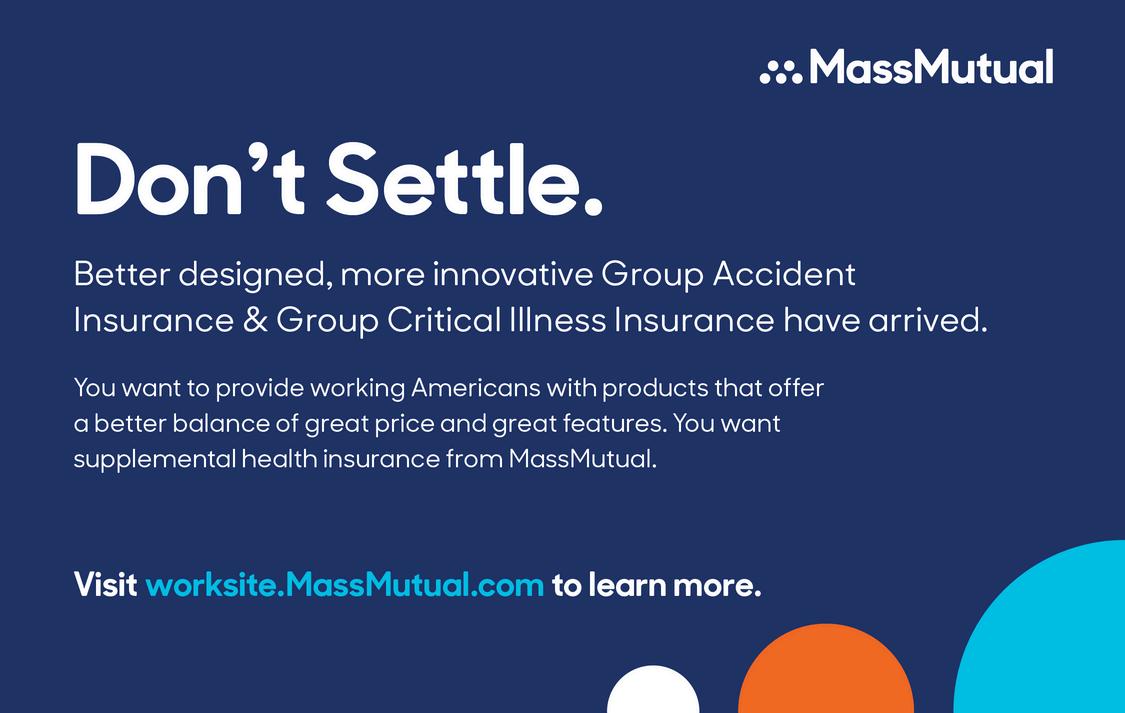
Many employers lack meaningful guidance solutions at annual enrollment and throughout the year
Modern decision-support tools make this possible By offering personalized, datadriven guidance during the enrollment process, these tools increase engagement, boost smart plan participation, and help employees save real money on average, about $500 per user annually What’s more, according to SAVVI’s study, 84% of employees say they’d be more likely to review their benefits carefully if the process were simplified. But education isn’t enough. Employees need to know what to do for their specific situation before the wrong choice causes undue stress.
At the end of the day, employees don’t want more information they want smart, actionable guidance. Employers who meet them with the right tools at the right time will build trust, improve financial well-being, and drive stronger engagement across the board Voluntary products offered in the context of that process help ensure financial well-being when employees need it most Employers who provide timely, personalized, and integrated support don’t just reduce financial stress they improve trust, loyalty, and overall satisfaction
Do you have any tips for strengthening engagement in financial wellness programs and measuring ROI?
Russ: Engagement starts with meeting employees where they are with communications, tools, and support that reflect their financial realities and goals
Personalized messaging, multi-channel outreach, and easy access to online and oneon-one support, all make a difference. Strong engagement is driven by employers and brokers who fully commit to the process: using employee data to inform targeted messaging, creating off-cycle enrollment opportunities, and making everything as flexible and accessible as possible.

When education feels relevant and action feels easy, participation rises – and measurable outcomes, like improved financial wellness, benefit utilization, and employee satisfaction, follow.
Meghan: Driving engagement in financial wellness programs centers on clear, consistent communication and personalization Tailoring programs to meet diverse employee needs and leveraging technology for participation are key To quantify success, ROI can be measured by analyzing participation rates, reductions in stress levels, and enhancements in productivity
With numerous financial wellness services now offered through traditional EAP plans and point solutions, how would you assess the strengths and limitations of the current resources available in the marketplace?
Brian: There are a number of excellent financial wellness tools available, but a tool only works when it’s used, and sadly many platforms struggle with adoption. We have found two levers that help increase adoption and engagement. The first is by integrating into experiences where employees already must go, such as an enrollment flow We’ve also worked with partners to offer incentives for using our financial wellness platform For example, one partner of ours uses Vitality points as a reward for completing financial wellness challenges
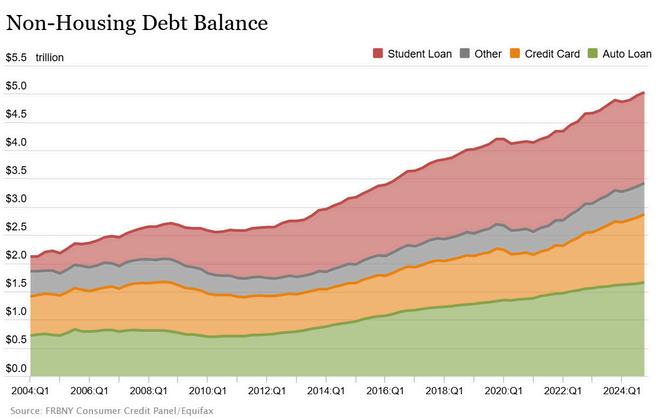
Credit card balances, which now total $1.21 trillion outstanding, grew by $45 billion during the fourth quarter and are 4.0% above the level a year ago.
Auto loan balances rose by $11 billion, and now stand at $1.66 trillion.
Other balances, which include retail cards and other consumer loans, grew by $8 billion.
Student loan balances grew by $9 billion, and now stand at $1 62 trillion
In total, non-housing balances grew by $73 billion, a 1 5% rise from 2024Q3.
Many financial wellness tools still treat benefits decisions in silos asking employees to pick health plans, retirement contributions, and savings options separately, even though they’re all connected. What employees really need is what we refer to at SAVVI as "OneWallet, NextDollar" thinking: a clear, unified view of how every decision fits together and guidance that helps employees know exactly where to put additional savings, whether it's into a 401k, HSA, additional coverage or personal savings Integration is key: 79% of employees say they’d be more engaged if guidance were available year-round, not just at open enrollment Providing personalized, year-round guidance helps employees make confident decisions that truly support their financial future
Meghan: The market offers a variety of financial wellness tools, many of which deliver personalized advice and facilitate realtime tracking, supported by educational resources.
However, opportunities for improvement exist, particularly in the integration of these tools with broader employee benefits. While accessibility is at an all-time high, customization to meet specific employee needs remains crucial.
Russ: It’s encouraging to see employers recognize the value of supporting employees’ financial wellbeing Many are taking a more holistic approach by integrating financial education and practical tools with a range of worksite and retirement benefits But too often, the strategies rely on one-size-fits-all approaches that don’t fully meet employees’ diverse needs More advanced education and tools are needed and must be more readily available to all employees Individual coaching and planning as part of a comprehensive benefits package can help reduce financial stress, increase mental health, and provide real benefit to both the employer and employees.
The evidence is clear: financial stress is weighing heavily on employees across industries and demographics and it's taking a measurable toll on workplace performance and well-being With millions of Americans facing mounting debt, stagnant wages, and the return of federal student loan collections, the need for effective financial wellness support has never been greater. While the market is filled with tools and resources, true impact comes from thoughtful, integrated solutions that go beyond one-size-fits-all offerings.
Employers have a unique opportunity to step in with meaningful support that addresses both short-term financial strain and long-term financial goals By doing so, they’re not just investing in benefits they’re investing in their people And in today’s competitive and rapidly changing landscape, that investment can be the difference between a workforce that’s merely surviving and one that’s truly thriving.
*All findings are based on a survey of more than 600 respondents, conducted in March-April 2025 Survey conducted at 95% confidence, +/- 4% margin of error Each respondent works full-time with access to employee-sponsored benefits, is 18+, and lives in the United States Full report available in May 2025

Brian Harrison, President, Head of Consumer Product at SAVVI Financial - ●Brian Harrison has over two decades of financial services experience as a producer, sales leader and division head and has served as the President of SAVVI since 2018 A native of the Boston area, Brian holds degrees from Middlebury College and the MIT Sloan School of Management as well as the CFP®,CLU®, ChFC®, CLTC designations
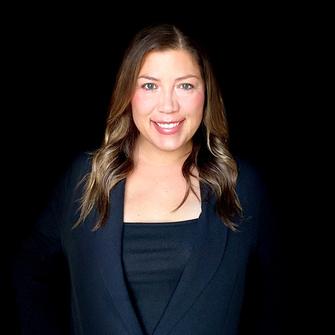
Meghan Pistritto, Vice President, Product Lead for Disability, State Paid Leaves and Holistic Well-Being, Prudential Financial, Group Insurance - Meghan oversees the strategic direction and financial performance, aiming to create products that blend science, technology, and human-centered design With over 15 years in the Group Disability and Absence industry, Meghan excels in navigating regulatory complexities
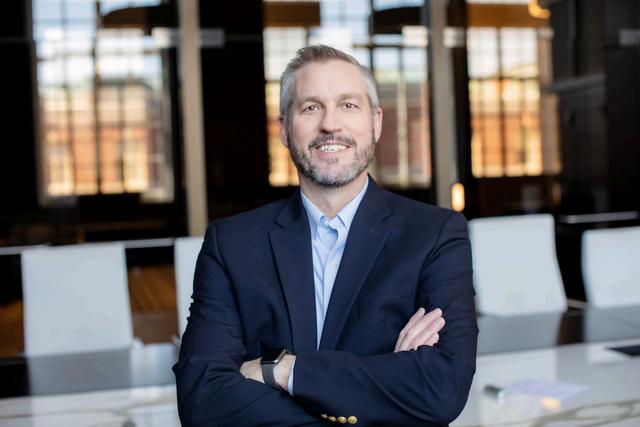
ris, Head of Worksite Distribution Strategy, MassMutual - Russ is driven by a passion to improve the financial well-being of every working American by hem be prepared for the unexpected, He has led the Worksite Distribution at MassMutual Worksite since 2019 and has over 25 years of financial services e
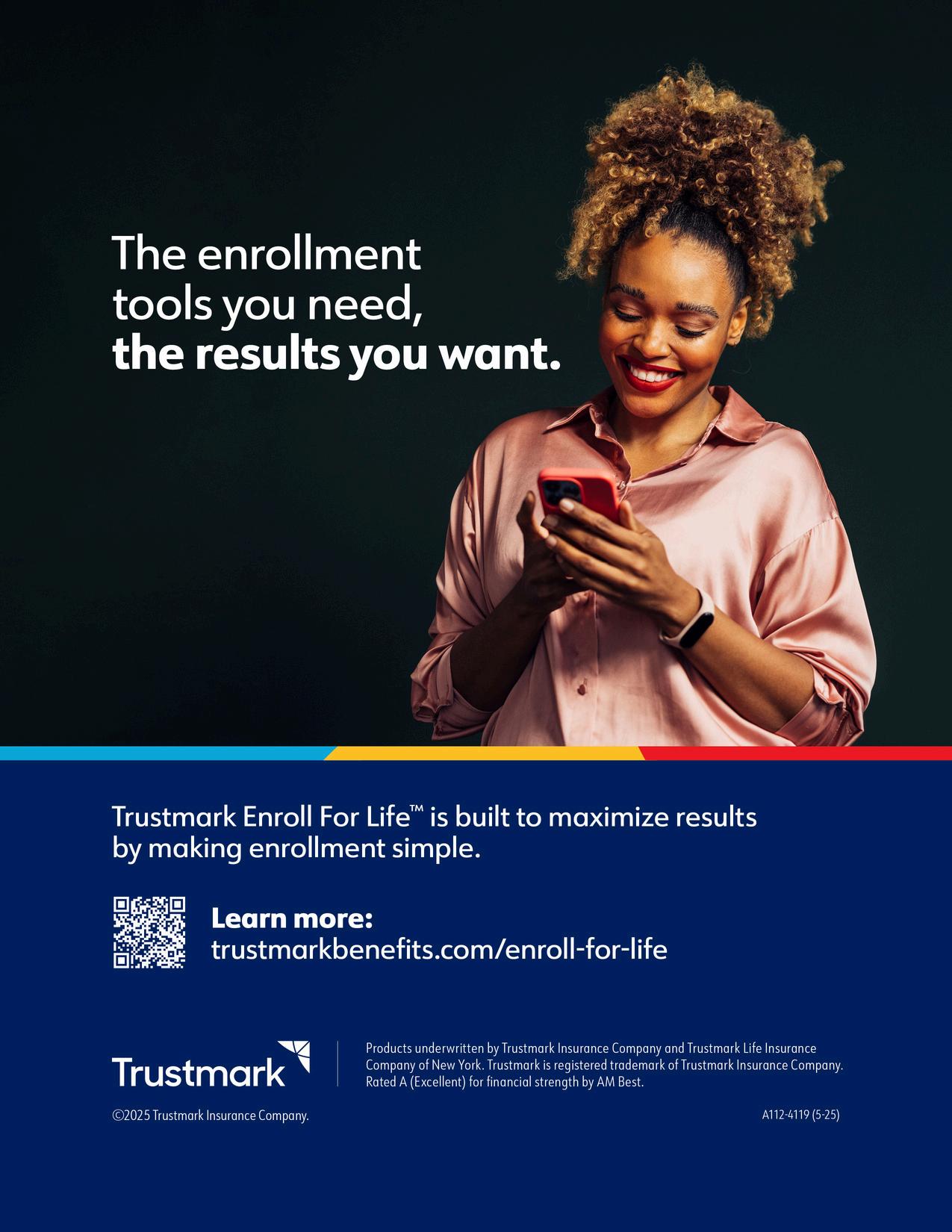

By Rachel Fox
Imagine a house with no foundation When a storm comes, the walls sway, the floor floods, and the roof is on the verge of collapse. It becomes unlivable. No matter how beautiful the building or the neighborhood, without a firm foundation, the house is sure to crumble.
Today’s typical worker is that house with no foundation Grocery bills are swelling Healthcare costs are spiraling. Rent is rising. Student loans have come due. The economic storm is already here, and without the firm financial foundation, those workers’ lives are drowning in uncertainty.
So what do we do?
The common solution has been more financial education and literacy – which we know can help Unfortunately, education alone can feel like an umbrella in a hurricane, and it struggles to scale Employees need more They need to achieve financial resilience: savings, stability, and systems that support them before, during, and after the storm
In this article, we share why and how delivering those systems makes economic sense. And how doing nothing erodes most organizations’ strongest asset – their workforce.
Uncertainty is a tax. When a business faces uncertainty, it makes hard, often austere decisions. When an individual faces uncertainty, it causes “financial precarity” – a term attributed to the research from University of Pittsburg Katz School of Business Professor Carrie Leana
Since a financial precarious person’s working memory – a cognitive function – is processing how to juggle upcoming bills with their own job uncertainty and family obligations, their brain is literally paying less attention to the job at hand, leading to costly, stress-induced mistakes
Physical health suffers too A study from the 2008 Global Financial Crisis found that worsening financial situation amidst economic uncertainty was a strong predictor of worsening physical health.
How does that show up? If an employee can’t pay a $400 emergency expense, it doesn’t stay neatly contained in their bank account That strain shows up in every part of their life – from missed or skipped doctors’ appointments to unfilled prescriptions to anxiety and mistakes at work All of which eventually lead to costlier claims and premiums


Mental health also takes a hit The research is clear: employees are reporting higher stress, more anxiety, and less capacity to focus or engage at work
And so when employees are forced to choose between a prescription and a utility bill, between a student loan repayment and physical therapy, they’re not building a future – they’re just making it to Friday.
In an uncertain world, stability is magnetic. Employees crave it. Economies depend on it. Employers have a real opportunity to be the stabilizing force that employees are seeking. A reliable paycheck is only a part of the solution. Employees are looking to their employers for ways to lessen their overall financial precarity
Specifically, employees need and want access to tools that create real financial breathing room that lets them navigate life’s inevitable and immediate ups and downs Today’s standard package comes with market pay, a healthcare plan, and a retirement plan But are those tools enough to make someone less financially precarious?
Forward-thinking employers are starting to leverage a modern framework to map out what those tools look like for their specific workforce, to nudge them from precarity towards economic security & freedom
The above illustration shows how one can think about an employees’ financial horizon over time, from immediate "how do I get by?" concerns to long-term hopes about retirement and legacy. It’s a reminder that financial decisions and considerations aren’t just one-time events it’s a constant thread that changes as life progresses.
For employers, building a financially resilient workforce means offering compensation and benefits that meet employees where they are today and where they hope to go tomorrow That could mean emergency savings accounts to handle the unexpected, financial coaching or certifications to boost mobility, and retirement solutions that help people dream about and plan for the future A well-rounded benefits package isn’t just about checking boxes; it’s about creating a path toward lasting financial security, mobility, and freedom
And it can vary by industry or the organization itself. So the new standard package may mean technology companies offer tuition reimbursement, while quick service restaurants offer quicker access to pay.
But across all industries and incomes, the focus on emergency savings has never been higher – and it makes sense as the primary way to build a financial resilience and foster financial confidence.
An employee’s financial well-being is shaped by their life circumstances and dreams. Everyone will need emergency savings, and they also have big milestones that cost money – personal and financial goals that they want to accomplish. Not taking those milestones into account today only creates another kind of financial emergency tomorrow That’s why a goal-based savings approach to emergency savings is so powerful: they meet people where they are in their journey, not where we assume they should be as a number
It’s built for real life. Employees aren’t saving for abstract ideas – they’re saving for a car repair, a new apartment deposit, a medical bill, and holiday gifts for their kids
It’s flexible. Unlike 401(k)s or other taxdeferred accounts, employees can withdraw without penalties when life demands it.
It’s safe. Employees deserve a safe place to put their hard-earned money, free from hidden fees, predatory practices, or market fluctuations.
It’s preventative. As highlighted in this ASPPA article, by offering accessible liquidity, employers help workers avoid dipping into retirement funds early, preserving long-term financial dreams while meeting immediate needs
The result? A healthier, more secure workforce that isn’t just reacting to crises, but proactively preparing for them And having savings leads to better decisions about work, health and life
For example, Professor Leana’s research found that a logistics company whose drivers participated in a workplace emergency savings program saw an 87% reduction in traffic tickets.
In a recent Broadridge webinar, Prof Leana and Sid Pailla, Founder of Sunny Day Fund, shared how impactful emergency savings empower employees to avoid costly debt and stay afloat during times of financial crisis. That’s the power of behavioral change.
Sunny Day Fund’s own clients Tom and Sheri Schrader, owners of Cottage Care (a nationwide residential cleaning company) recently said “Our employees can now track their savings at any given time, withdraw into their own bank accounts, and earn incentives to save We believe it creates yet another point of loyalty with our employees”
A costly mistake that some employers, their consultants and advisors make is assume that a focus on short term financial security means fewer contributions to retirement or worse retirement metrics This couldn’t be farther from the truth
Firstly, financial resilience may have multiple support layers: financial coaching, debt management support, emergency savings, retirement savings, and more – much like the earlier illustration. Many are already investing in a variety of these solutions. But the place to start is listening to the employees. Understanding what they need today and where they dream of going tomorrow ensures that the benefits actually deliver the desired outcomes.
Secondly, a more comprehensive financial wellness strategy actually creates better results for retirement plans, just like with healthcare For example, when someone builds up a $1,000 in emergency savings, they’re half as likely to tap retirement savings for costly loans and early withdrawals Other employers have actually reported an increase in retirement participation and contributions
And finally, employers and consultants alike have defaulted to financial education and advice for action As shared earlier, we know that’s helpful but not enough Consider the conversion rate of an education-related program activating ~4% of the population towards new savings or other financial actions, versus a dedicated emergency savings program achieving 40%-60% participation.
Why is that? When employers integrate savings directly through payroll, automatically open a high-yield workplace emergency savings account in seconds, and reinforce new savings habits with company contributions, they remove barriers and make lasting behavioral change possible –just like they do with retirement savings The same goes for college debt repayment or other financial commitments So advice is essential, but it must be paired with the resources to act on it
Employees are plagued with economic uncertainty and are looking to their employer – their trusted source for their paycheck – for help Employers don’t have to solve every financial problem their employees face, but they can offer meaningful benefits that remove barriers, automate actions, and spark momentum Behavior change happens when the path is made easier
Employees are navigating an environment where uncertainty is the only constant and life is not about to get cheaper. From rising rents and everyday essentials to looming economic shifts, the pressure is mounting. But waiting until the crisis hits home is not an option. Employers who lead now won’t just support their teams through today’s challenges they’ll be the ones thriving in tomorrow’s economy
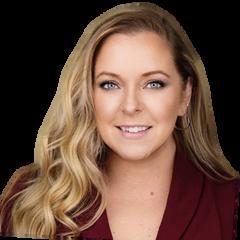
Rachel Fox - Vice President, Sales & Partnerships, Sunny Day Fund: With 23 years of experience in employee benefits, Rachel Fox brings deep expertise and passion to solving financial precarity in the workforce Today, she serves as the VP of Sales and Partnerships at Sunny Day Fund, an out-of-plan, goal-based emergency savings account provider rooted in behavioral finance In addition to leading brand awareness and social engagement as the company’s public voice, she drives strategic growth through employer and partner relationships Sunny Day Fund empowers workers of all incomes to build liquid savings for emergencies and milestones, ultimately supporting economic mobility through automated, intention-based saving Rachel is committed to reshaping the benefit stack to support long-term financial resilience for the modern workforce

In today’s voluntary benefits landscape, brokers are tasked with more than just spreadsheeting carriers for their employer clients they must also ensure that the carriers they partner with can deliver their products efficiently, flexibly, and reliably For too long, outdated technology has created frustrating obstacles, both for brokers trying to manage plans and for employers and employees using them These challenges, deeply rooted in carrier legacy admin systems, have become almost accepted as the norm But they don’t have to be
Imagine a world where enrolling in benefits is seamless, where systems communicate effortlessly with one another, and where updates and changes don’t cause major disruptions
This isn’t just a dream it’s possible with the right technology. Some carriers are already making this a reality, and brokers who understand and insist on these technologies will be better equipped to serve their clients and solve the industry’s most persistent problems.
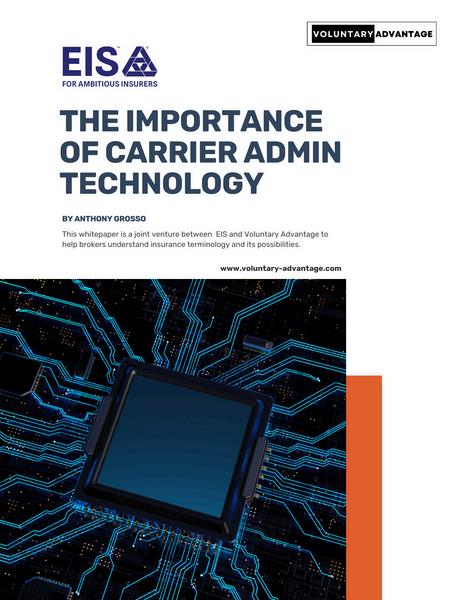

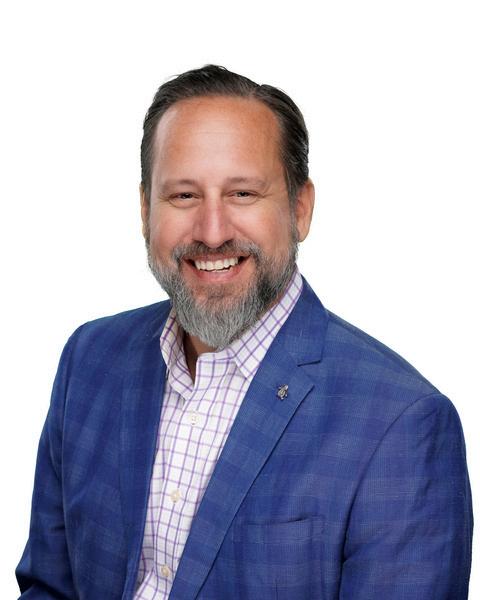
Anthony “Tony” Grosso Head of Growth / GWB Insurance Markets
Tony has over 25 years of hands-on experience leading innovation, business development, product and marketing across all sectors of the insurance industry Tony is leading the GWB market for EIS, a high growth company, helping Voluntary Benefits insurers to achieve their ambitious plans and incredible potential
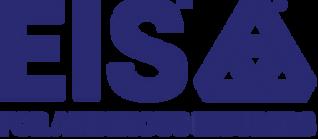
Let’s face it: we all know legacy systems are holding insurers back
This is why it’s our mission as a coretech supplier for insurers to stop that problem in its tracks. Our cloud-native SaaS platform is built to catapult insurers past old, legacy limitations, and to truly future-proof their technology ecosystem so their business model, product offers, and ways of serving their customers are never held back again, so they can have the truly agile operations of a tech company, rather than a legacy company stuck in decades past Learn more at www eisgroup com

By Heather & Trevor Garbers
We credit the members of the Voluntary Advantage Advisory Board with helping us bring industry leading content and stay on top of market trends. Today we asked two of our Advisory Board members to share their thoughts on hot topics in the industry today.
Here is what we learned
Paul, you have been on both the brokerage and now the carrier side of the industry, what are you seeing from a trends perspective in the benefits industry today?
”I anticipate 2025 could be a year that challenges the supplemental health benefits marketplace while also creating opportunities to redefine the perceived value of supplemental health coverage for employees. While 2025 may bring opportunities for positive change in some areas, in other respects the supplemental benefits industry may encounter challenges to determining a path forward.
The regulatory environment resulted in several new requirements in 2024, which may further impact the landscape this year
As stakeholders continue to work to meet consumer and customer expectations, the year ahead may bring clarity on the future direction of supplemental health benefits and that direction could be impacted by four trends
1 The supplemental health marketplace is at a crossroad. In 2025, the industry may have to help redefine the purpose and value of supplemental health plans Historically, utilization has been lower than anticipated, which has enabled employers and brokers to use savings to offer additional services to the workforce such as, enrollment counselors, enrollment systems and other consulting services. However, the industry has evolved with the integration of medical claims, which has increased supplemental health plan utilization. The amount of increased utilization is contingent on the type of integration and aggressive claims integration often results in a significant increase in claims volume. While this impact is not unexpected, it may limit the ability of employers to use savings to offer the workforce additional services and programs. This increase in utilization has created an environment where the employee is increasingly recognizing the value of their supplemental health coverage, but simultaneously, it has detracted from the ability to fund alternative services, causing our industry to find itself at a crossroad Are supplemental health benefits designed to support the employee and their family or are they designed to support the employer or broker? The answer should be obvious: these programs are designed to support the employee, but whether the expenses that were once offset by funds from voluntary benefits dollars can find alternative funding sources remains an open question
2 Will the supplemental health “race to zero” continue to surge in 2025? The so-called “race to zero” appears to be strong and indicators seem to point to this race gaining further traction in 2025 On the surface, this may appear to have a positive impact for the employee, but it could negatively impact the value of supplemental health programs The trend I have seen in the marketplace has been towards increasing benefit amounts while decreasing premiums, which can conflict with providing value to employees by ensuring claims are paid Of course, increasing benefit and decreasing cost can benefit the employee, but the point is that this trend can only continue alongside lower utilization So, how should the industry determine plan value: by prioritizing the most robust benefits with the lowest premiums or appropriate utilization? I believe the answer is appropriate utilization because it ensures cash benefits are paid to employees when they need it most. However, it remains to be seen whether the industry as a whole will continue to invest in claims integration in 2025 or go further down the path of the race to zero.
3.Regulatory pressures surfaced in 2024 and most likely will continue into 2025 and beyond. In 2024, regulations resulted in a consumer notice that must be incorporated into key hospital indemnity plan materials in 2025 and beyond. Other elements of the proposed regulations did not come to fruition but have triggered some states to take a harder look at the supplemental health portfolio As states push to implement more consumer protections, they may require carriers to provide additional insight into plan financials In short, I expect an active 2025 regulatory environment that should be closely monitored
4 Artificial intelligence (AI) may be an important topic in 2025: From improving the accuracy of a diagnosis to better predicting a patient’s response to treatment to managing care faster and more cost effectively, AI is already helping the health care system work better for everyone As these promising innovations as well as the conversation about how best to harness the power of AI continue to evolve, it will be more important than ever for industry stakeholders to think about how advanced technology can be responsibly leveraged Transparency, privacy, security, and continuous improvement are vital to using these technologies in a way that best serve the interests of everybody
While no one can see the future, by evaluating the curre stakeholders can identify ongoing challenges that, if approa redefine the perceived value of supplemental coverage for the f
Paul Hummel

Tim, you are on the brokerage side of the industry and work directly with clients. When it comes to employee wellbeing in the marketplace, what are you hearing and what is trending today?

“The increased cost of benefits, especially medical, is a historically huge trend It is starting to impact the cost of ancillary life and disability products, too Although not voluntary, clients are talking about GLP1’s as weight loss tools and how to address the rising utilization and the impact on the medical spend Education continues to be at the forefront of all discussions, not only what benefits and plans employees can elect, but also how to utilize them Most importantly, clients are concerned with getting the biggest value for employee and employee-funded plans.
Recently, student loans have become a huge budget item for impacted employees. Starting May 5, default student loan payments are now being reported to the Credit Bureaus, impacting over $5 million in borrowers. We have already seen an overall 2-point reduction in the average American’s credit score, and this loan default will impact employees financially in even more ways!
Family building and women's health are also big conversation points. 1 in 6 people struggle with infertility, and roughly 27 million women in the US workforce experience menopause and perimenopause Whether leveraging existing family building and women's health programs to help employees better understand their benefits or exploring options to add solutions, these issues are front and center with employers
What are clients asking for?
Clients want to make sure the benefits they have are being utilized by their employees and any employer-funded dollar is benefiting their employees The rising costs are impacting all clients, but those owned by private equity are especially diligent about exploring every opportunity for the greatest ROI
Although most employees continue to see rising costs in all aspects of their lives, employee-paid benefits are a tool that employers continue to leverage to retain and attract employees The ability for employees to receive discounts from group offerings, access to generous guarantee-issued offerings, and being able to fund through payroll are a win-win.
With many new solutions and vendors in the marketplace, clients are looking for guidance and education on what is out there – and what can really move the needle.
Are they allocating dollars to implement solutions?
Clients are willing to spend on the right solutions. Those solutions need to impact the bottom line, though Whether it is improving the health of their employees, offsetting other employer costs, or reducing turnover, most are no longer willing to roll out something new just to check the box
Employers are being much more strategic not only about the need, but also the roll out and ongoing support to service solutions”
Tim Schnoor


VoluntaryAdvantagehaspartneredwithNABIPtoupdatetheirVoluntary/WorksiteCertificationand itisliveandavailabletoyou24/7virtually.
ThecostoftheVoluntary/WorksiteCertificationcourseis$304.70forNABIPmembersand$401.50fornonmembers,whichincludesonlineinstructioninthreeone-hourwebinarmodules,afinalexamand continuingeducationcredits.Uponcompletion,youwillreceiveacertificateofcompletionas voluntary/worksitecertified.
CourseHighlights:
Mastertheproductwithinnovativesolutions
Understandcontractdifferences
Reviewimplementationandadministration
Obtaincrucialcomplianceinsights


By Steve Clabaugh, CLU, ChFC
“Relational leaders demonstrate that they care for their team members as much as the organization. As a result, they create, build and lead high-performance teams that consistently achieve excellence.“
On paper, he was a highly qualified candidate for a very important position. But when we met to discuss offering him the position, after having interviewed with several of our leaders, the consensus opinion was a unanimous no.
There were just too many red flags for us to have confidence that he was the right person for the position Among other things, interviewers observed that he had never stayed with any employer longer than 2 years; he was critical of both his peers and supervisors in each of his previous positions and the focus of his interests seemed to be on his personal hobbies and achievements
We couldn’t think of any reasons why we should expect a different outcome if he joined our organization.
In modern times, the phrase “red flag” has come to represent warning or danger. And it has a long history during which it has earned that meaning.
During warfare in the Middle Ages, a red flag signified that no mercy would be given Railroads, in the 18 and 19 centuries, used red flags as a signal to stop trains due to a hazard on the tracks th th
In horse racing it means dangerous track conditions and, in auto racing, it signifies that the race must be stopped immediately for a safety related situation
Some 50 years ago, the United States Air Force created a special program that is still continued today, called the Exercise Red Flag The reasons for starting the program and the results they have achieved from it provide some great lessons for relational leaders to apply to their organizations
Near the end of the Vietnam War, the Air Force recognized that the efficiency and effectiveness of air combat resources had diminished greatly since World War II and The Korean War. This was costly, not only, in achieving vital results, but also in the loss of valuable equipment and, even more valuable, the lives of pilots and crew members. The same study, however, also demonstrated that the effectiveness of more experienced pilots and crew was actually better than historical results
Air Force leaders set out to develop a means of providing greater experience for their teams
In 1975 the first Exercise Red Flag was held and it has continued to this day In fact, today Exercise Red Flag programs are held several times a year usually based out of Nellis Air Force Base in Nevada with some taking place at Eielson Air Force Base in Alaska They i l d l Ai F C b N
Here’s how an Exercise Red Flag works. Selected air combat units participate in two week live combat training which includes both pre-flight and post flight briefings of Blue Forces (friendly) and Red Forces (hostile) teams The teams then engage in realistic combat scenarios closely monitored and graded by senior level commanders using sophisticated computer analysis and reconstruction of battle plans and actions They also provide GPS jamming and other interferences with the participants’ actions and evasions
The participating military teams have learned, and continue to learn, a lot about their equipment, crews, internal strategies and tactics, as well as, enemy equipment, strategies and tactics. The Exercise Red Flag programs (which take place 3 – 6 times per year) are considered to be more challenging than actual combat experience, which accounts for why the results have been so outstanding
Evaluating and responding to Exercise Red Flag programs have identified key areas for improvement including: Equipment Improvements Design of New Equipment Refreshing Strategic Plans Revising Tactical Responses Improving Crew Training

One of the most interesting discoveries of Exercise Red Flags, has been a better understanding of the impact of extreme mission focused attention on the performance of pilots As you can imagine, remaining focused on the mission, equipment, crew and enemy activity require an absolute focus in order to accomplish mission objectives and protect the lives of pilots and crew members
When a pilot and crew are unsuccessful at evasion and are “hit” by an electronic weapon, they are instructed to return to base Sometimes, however, pilots become so focused on the mission that they literally do not hear the order to return and continue fighting in the air battle. This has happened so often that there is a name for such pilots “rogue ghosts.” The other participants are instructed to ignore any combat activities from these planes and their pilots and crew receive supplemental training and support following the exercise.
Are there takeaways that relational leaders can use to help build and strengthen their teams for continued growth and success? In other words, what can relational leaders learn from Red Flag Exercises?
In the fast-moving business world of today we have to deal, not only, with the basics of our business but the external impacts of an often confusing and conflicted social culture further complicated by the ongoing development of rapidly changing technology When we develop or discover potential solutions to the many challenges we face, it is often tempting to try and implement the new process, procedure or policy immediately. Sometimes immediacy is required but, most often, it is much better in the long run to practice prior to full implementation.
I remember working for a company that was constantly seeking a unique winning program that would achieve sudden breakthrough success for each branch office
First, we were put through a training course on the new program, then for the next year or so, the program would be promoted constantly Then, suddenly, a new program would be introduced with the same approach During one five-year period, we were pressured into participating in one program after another including: a unique direct mail and calling marketing technique; a mentoring program combining new employees with experienced associates; and a revolutionary new product design that turned out to be not so revolutionary In the final analysis, the constant changing of programs caused more confusion and frustration than the minimal results they produced.
One of the unique priorities of the Relational Leadership Experience Program is the focus on immediately practicing each of the principles we teach. For example when we cover the: Principles of Championship Team Behavior – we practice analyzing external business organizations looking for evidence of their application of those principles
Productivity Formula – we practice by scoring past and present team members comparing the scoring with actual performance results
Stages of Group Development – we practice by measuring current team scores and combining them with Productivity Formula scores to determine where our current team stands in the process of becoming a high-performance team
Four Types of Mentoring – we practice by analyzing five “real world” scenarios to determine what type of mentoring program best meets the needs addressed by the conditions presented in the case study.
Building an Effective Action Plan – we practice by reviewing a sample Action Plan for a fictional company followed by creating a sample Action Plan for a fictional company
It takes some extra thinking, planning and effort to develop ways of practicing new procedures and policies It is well worth it because the critical lessons learned can have a profound impact on the likelihood of ultimate success by answering key questions like:
Do we have the right skill sets on our team?
What additional training and resources do we need?
Does our team have the necessary time bandwidth?
Does this program fit with and contribute to our team’s purpose?
Will this program detract from other critical activities?
Will this program help our team members to grow?
There are more lessons to be learned from the Exercise Red Flag programs. Next month we will examine how to avoid becoming a “Rogue Ghost.” In the meantime, please feel free to contact me to discuss any questions or challenges you (or your clients) may be facing.

Steve Clabaugh, CLU, ChFC - started his career in insurance as a Field Agent, moving on to Sales Manager, General Manager, Regional Manager, Vice President, Senior Vice President, and President/CEO. A long time student of professional leadership, Steve created the Relational Leadership program that has been used to train home office, field sales associates, midlevel managers, and senior vice presidents
Determine if RLE is right for you and your clients:
1.Request a copy of the comprehensive FREE REPORT “Relational Leadership Experience and You A Winning Combination!” to learn how RLE benefits your client’s business and your bottom line
2 Request a link to watch a FREE SAMPLE LESSON about Accidental and Incidental Mentoring recorded directly from the actual RLE program
3.Sign up for an EXCLUSIVE RLE PROGRAM for brokers and voluntary benefits organizations. See for yourself how RLE principles can benefit your practice and that of your clients.
or
Designedtohelporganizationsofalltypes buildapositiveworkculturethatcanstand thetestoftimeanditschangingissues RelationalLeadershipExperience(RLE) teachesprovenprinciplesandwisdomof leadersfromawiderangeofexperiencesover thepastcentury.Itprovidesastep-by-step approachforemployerscombinedwith consultativesupportindesigningand implementingaprogramwithmeasurable resultsspecifictotheirorganization